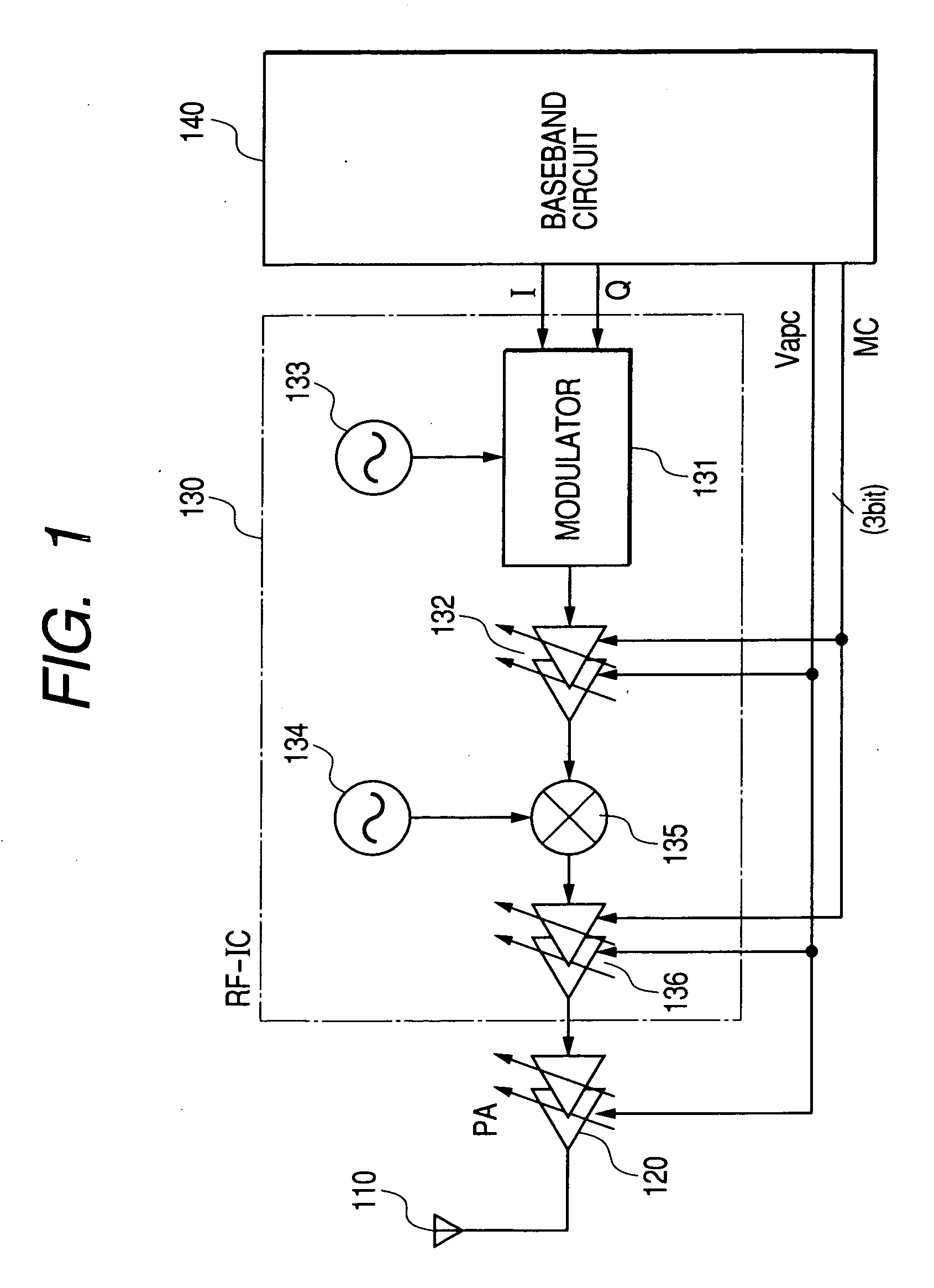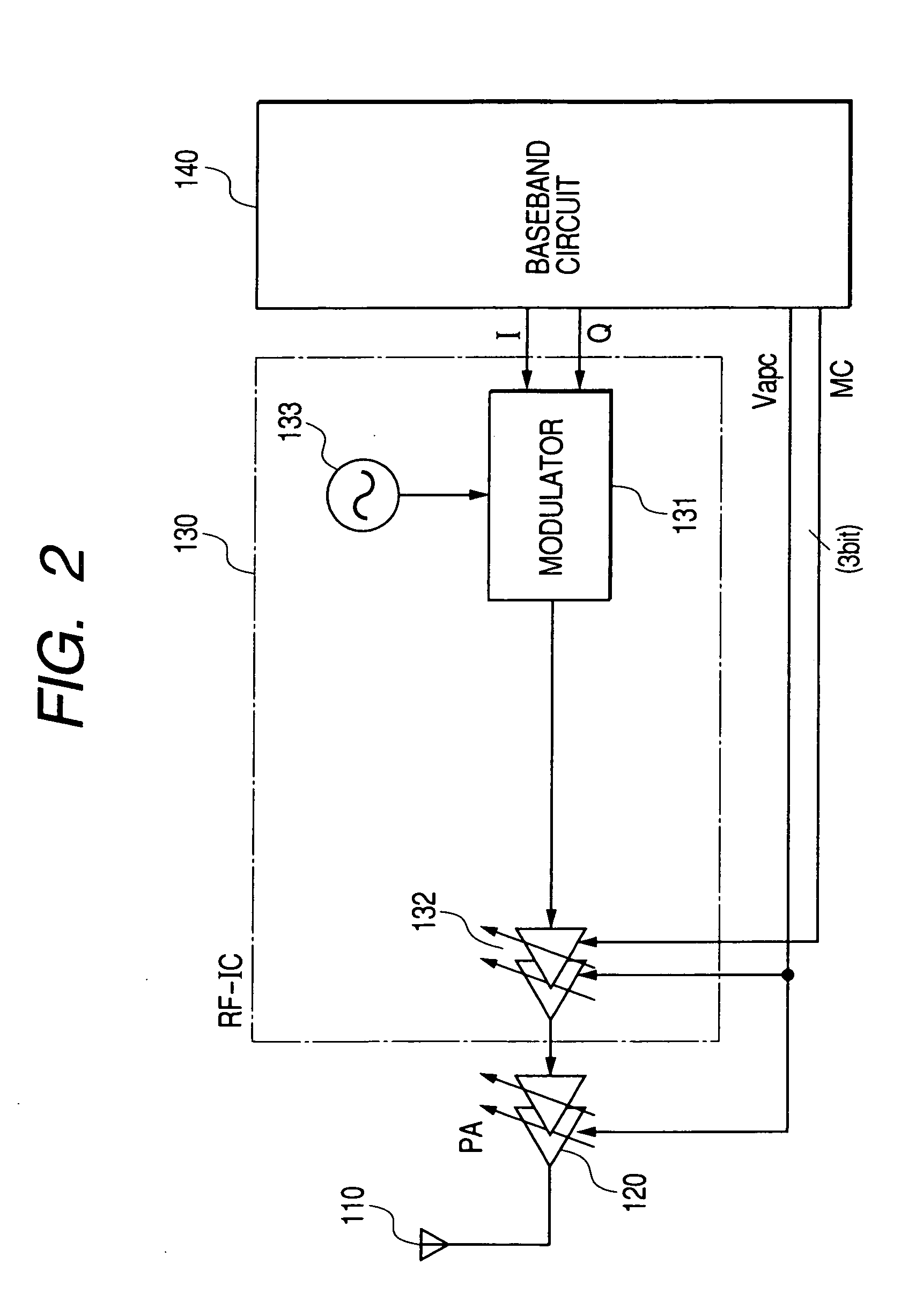Semiconductor integrated circuit device and wireless communication system
a technology of integrated circuits and semiconductors, applied in the field of wireless communication technology, can solve the problems of increasing transmission signal distortion, deteriorating acpr (leak power ratio to the adjacent channel), and increasing signal distortion, so as to achieve the effect of lowering current consumption
- Summary
- Abstract
- Description
- Claims
- Application Information
AI Technical Summary
Benefits of technology
Problems solved by technology
Method used
Image
Examples
second embodiment
[0055] Moreover, in this second embodiment, the average output levels of the variable gain amplifying portion 132 and power module 120 is adjusted depending on the gain control signal Vapc from the baseband circuit 140, the control information MC indicating the number of code division multiplexes is supplied to the transmission circuit 130 from the baseband circuit 140, and the operation current of the variable gain amplifying portion 132 is switched depending on the control information MC. Even in this embodiment, the control information MC indicating the number of multiplexes may be any one of the 3-bit code or the control voltage of seven voltage levels.
[0056]FIG. 3 and FIG. 4 illustrates a third embodiment when the present invention is applied to the code division multiplex transmission circuit of the mobile telephone of the W-CDMA system. This embodiment is different from the first embodiment only in the method of applying the control information MC indicating the code division...
third embodiment
[0057] In more practical, the transmission circuit 130 of the third embodiment is provided with a mode control circuit 137 which controls the interior of the RF-IC chip such as power ON / OFF of the transmission circuit and setting of frequency of the local oscillators 133, 134 depending on the mode control signal for designating each operation mode supplied from the baseband circuit 140. The mode control circuit 137 and the baseband circuit 140 are connected with three signal lines. One of the three signal lines is a signal line to supply the clock signal CLK, another signal line is used for serial transfer of the data DATA and the remaining signal line is used to supply the load enable signal LE which allows fetching of the data.
[0058] The mode control circuit 137 of this embodiment is provided, although not particularly restricted, with a 10-bit shift register and a 10-bit control register. The serial data DATA is fetched by the shift resistor and is then shifted in synchronization...
PUM
 Login to View More
Login to View More Abstract
Description
Claims
Application Information
 Login to View More
Login to View More - R&D
- Intellectual Property
- Life Sciences
- Materials
- Tech Scout
- Unparalleled Data Quality
- Higher Quality Content
- 60% Fewer Hallucinations
Browse by: Latest US Patents, China's latest patents, Technical Efficacy Thesaurus, Application Domain, Technology Topic, Popular Technical Reports.
© 2025 PatSnap. All rights reserved.Legal|Privacy policy|Modern Slavery Act Transparency Statement|Sitemap|About US| Contact US: help@patsnap.com



